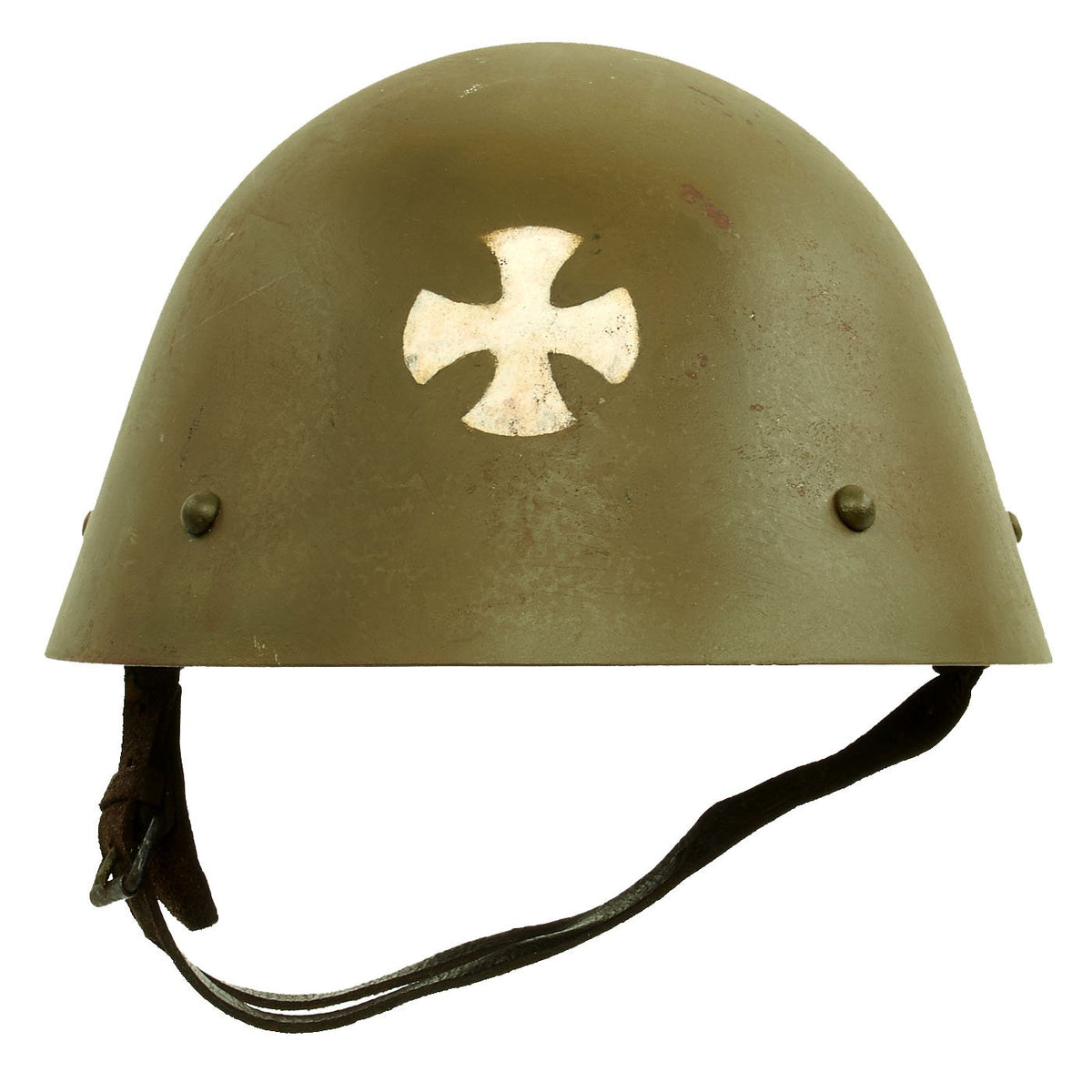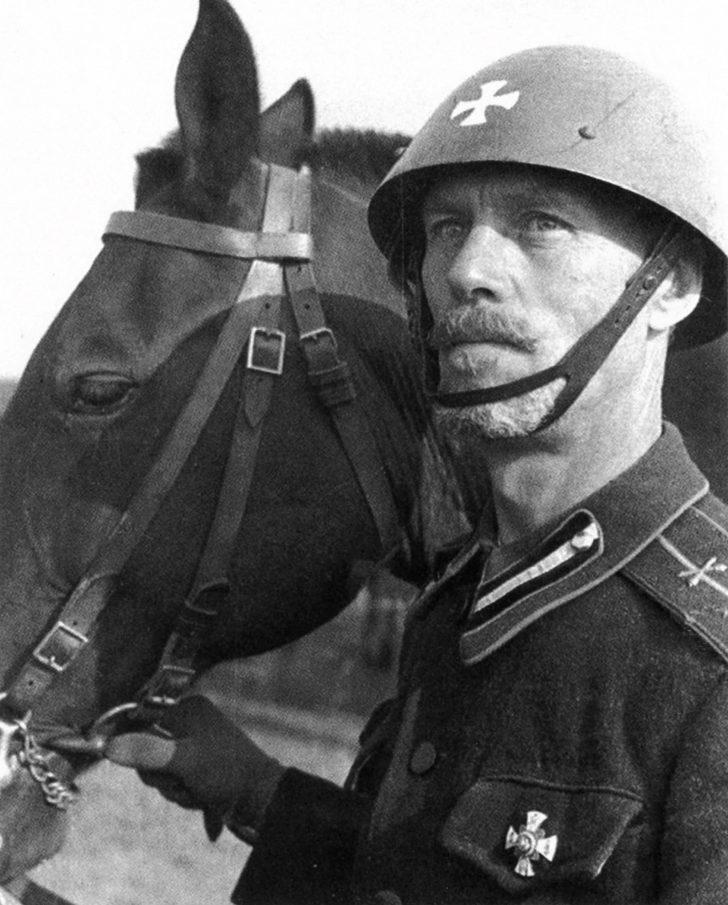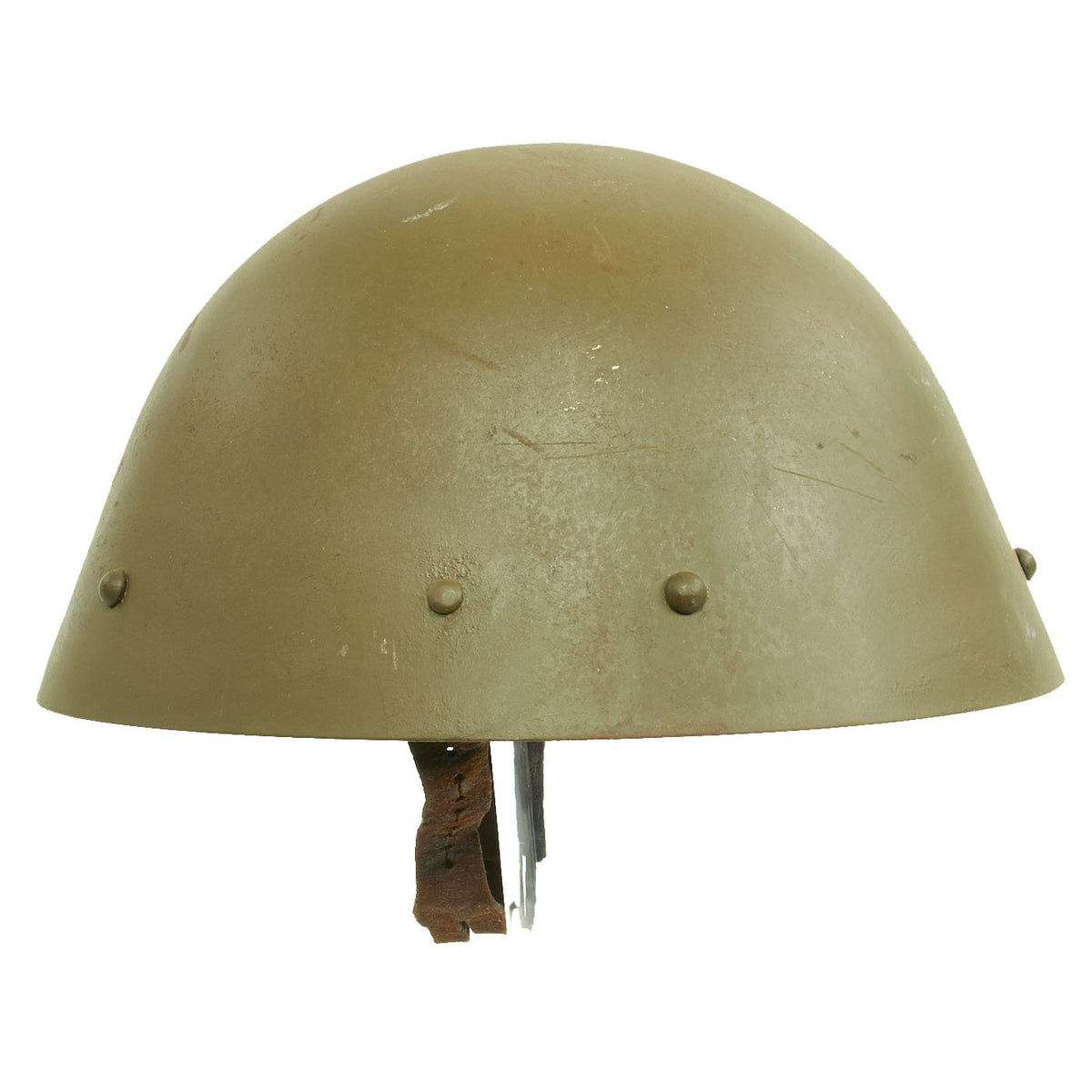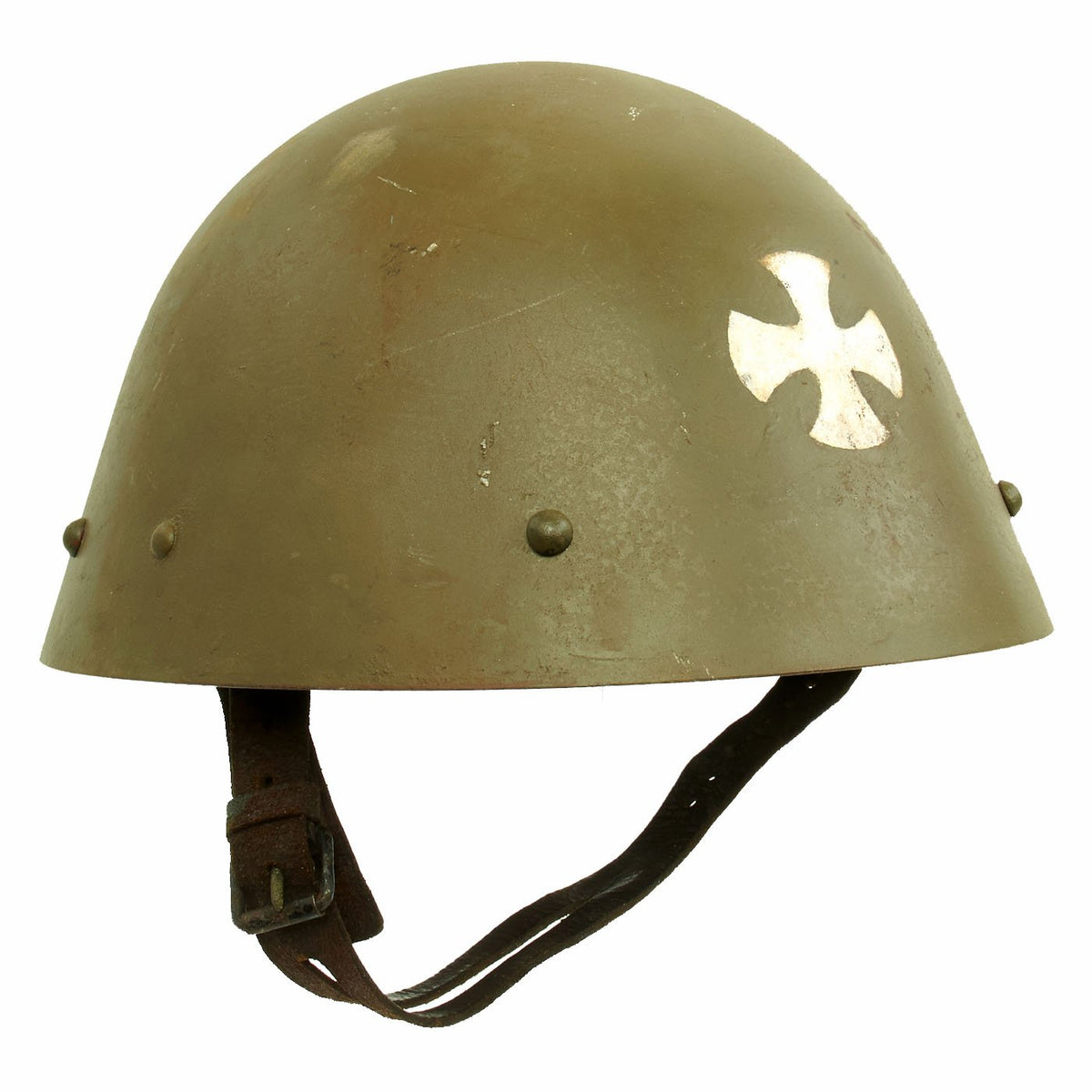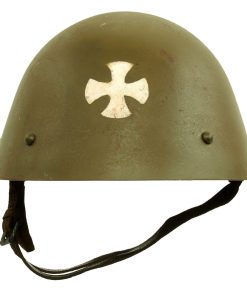Original Czech WWII Vz32 / M32 “Egg-Shell” Russian Protective Corps Issued Steel Helmet Original Items
$ 395,00 $ 118,50
Original Item: Only One Available. This is a very rare Pre-WWII Czechoslovakian Vz32 Steel helmet, sometimes known as the M32, M34, Vz32/34, and other designations. It was used pre-war, and then during WWII it was reissued for use with the “Russian Protective Corps”.
The Vz32 was the last of many Czech helmet designs, and were issued in the 1930’s and saw service right through to the German Invasion. These helmets would be continued to be worn well after with the German Luftschutz and the German Allied Slovak Army on the Eastern Front. After the war these helmets would be adopted by the Civil Defense and Fire Brigade units.
The Vz32 shell is “egg-shell” shaped, unlike many helmets of the day, which had pronounced contouring, front brims, etc. It has a unique 5 pad liner system, which utilizes 5 discrete pads that are riveted to the shell, along with a standard heavy leather split chinstrap attached on bales that are riveted directly to the shell.
During WWII, this helmet was issued to the Russian Protective Corps of Serbia, as indicated by the OD green color, and the Cross on the front of the helmet. This was a Pro-Germany force raised in German Occupied Serbia, mainly for the protection of factories and other important industrial locations against Communist-Allied Partisans. This is the first time we have had a helmet used by this unit, and they seem to be relatively rare.
The liner and chin strap are in good condition, but due show wear and age. The chin strap has some stains and cracks, and looks like it was exposed to water at some point. The six liner pads still have their original padding, wrapped in plastic, installed behind each pad. The original maker markings that are usually on the rear of the pads are unfortunately absent.
A nice example of a WWII Czech, reissued for Anti-Partisan operations in Serbia during the war. Ready to display!
The Russian Protective Corps (German: Russisches Schutzkorps, Russian: Русский охранный корпус, Serbian: Руски заштитни корпус / Ruski zaštitni korpus) was an armed force composed of anti-communist White Russian émigrés that was raised in the German occupied territory of Serbia during World War II. Commanded for almost its whole existence by Lieutenant General Boris Shteifon, it served primarily as a guard force for factories and mines between late 1941 and early 1944, initially as the “Separate Russian Corps” then Russian Factory Protective Group. It was incorporated into the Wehrmacht on 1 December 1942 and later clashed with the communist-led Yugoslav Partisans and briefly with the Chetniks. In late 1944, it fought against the Red Army during the Belgrade Offensive, later withdrawing to Bosnia and Slovenia as the Germans retreated from the Balkans. After Shteifon′s death in Zagreb, the Independent State of Croatia, on 30 April 1945, Russian Colonel Anatoly Rogozhin took over and led his troops farther north to surrender to the British in southern Austria. Unlike most other Russian formations that fought for NSDAP Germany, Rogozhin and his men, who were not formally treated as Soviet citizens, were exempt from forced repatriation to the Soviet Union and were eventually set free and allowed to resettle in the West.
Fast Shipping with Professional Packaging
Thanks to our longstanding association with UPS FedEx DHL, and other major international carriers, we are able to provide a range of shipping options. Our warehouse staff is expertly trained and will wrap your products according to our exact and precise specifications. Prior to shipping, your goods will be thoroughly examined and securely secured. We ship to thousands clients each day across multiple countries. This shows how we're dedicated to be the largest retailer on the internet. Warehouses and distribution centres can be located throughout Europe as well as the USA.
Note: Orders with more than one item will be assigned a processing date depending on the item.
Before shipping before shipping, we'll conduct a thorough inspection of the items you have ordered. Today, the majority of orders will be delivered within 48 hours. The delivery time will be between 3-7 days.
Returns
The stock is dynamic and we cannot completely manage it because multiple stakeholders are involved, including our factory and warehouse. So the actual stock may alter at any time. It's possible that you may not receive your order once the order has been made.
Our policy is valid for a period of 30 days. If you don't receive the product within 30 days, we are not able to issue a refund or an exchange.
You can only return an item if it is unused and in the same state as the day you received it. You must have the item in its original packaging.
Related products
Uncategorized
Uncategorized
Uncategorized
Armored Burgonet Helmet & Polearm from Scottish Castle Leith Hall Circa 1700 Original Items
Uncategorized
Uncategorized
Uncategorized
Uncategorized
Australian WWII Owen MK1 Machine Carbine SMG Custom Fabricated Replica with Sling Original Items
Uncategorized
Uncategorized
Uncategorized
Uncategorized
Uncategorized
Uncategorized
Uncategorized
Uncategorized
Uncategorized
Uncategorized
Uncategorized
Angolan Rebel 1970s era 60mm Inert Display Mortar from Angolan Civil War Original Items
